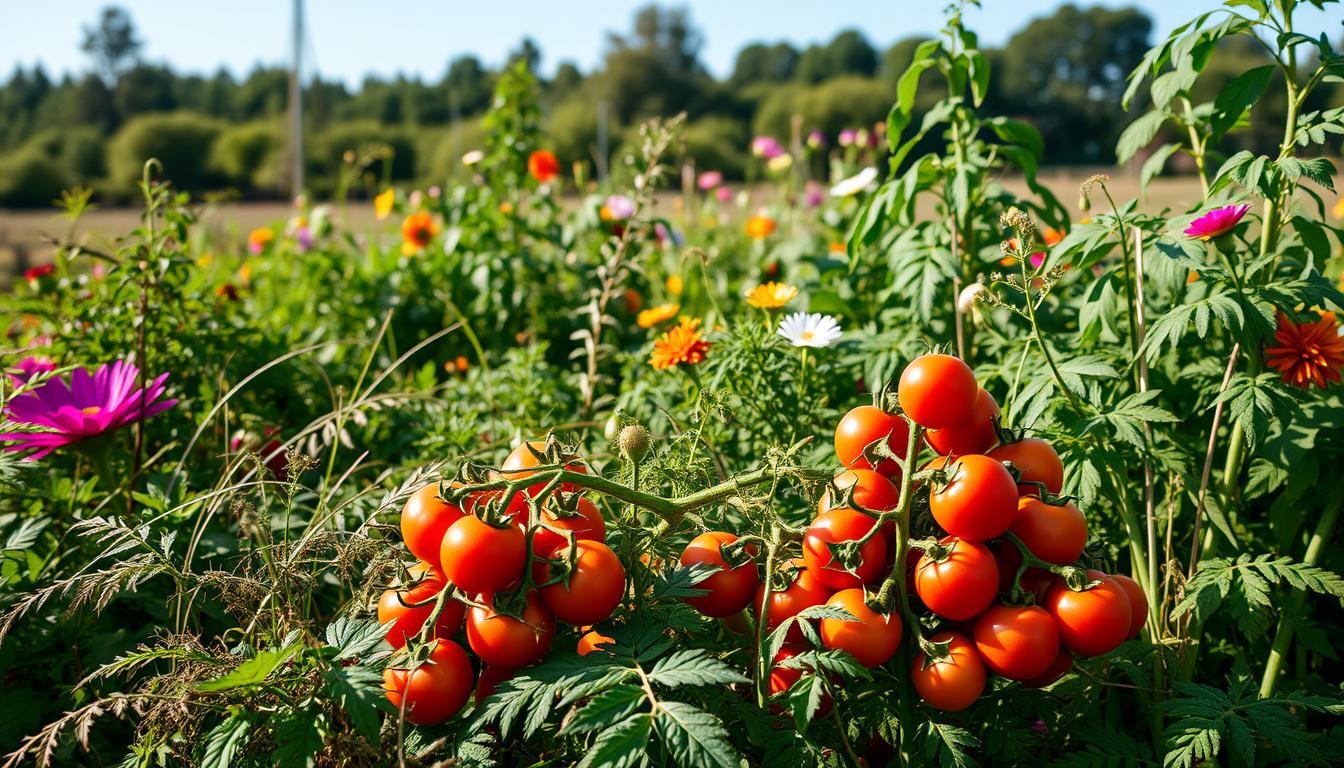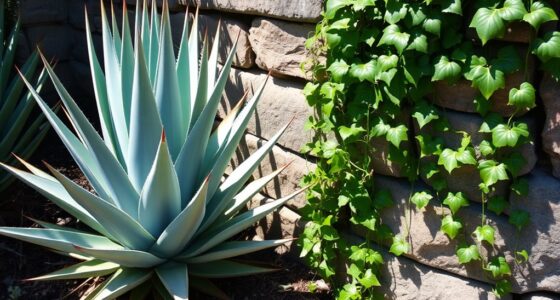Imagine stepping into your garden, the warm sun on your face, and the rich scent of earth filling the air. There’s a satisfaction that comes from tending to your plants, particularly when those plants are tomatoes—juicy, flavorful, and cherished in kitchens across America. However, not every plant is a friend to your flourishing tomato plants. Many gardeners have faced disappointment when they discover that certain plants can inhibit growth and lead to underwhelming harvests. By understanding what not to plant with tomatoes, you can protect your beloved crop and nurture a thriving garden. Let’s delve into the maze of tomato companion planting and identify critical incompatibilities that could sabotage your tomato success.
Key Takeaways
- Understanding what not to plant with tomatoes is crucial for successful gardening.
- Choosing the right companion plants for tomatoes can enhance growth.
- Some plants may compete for nutrients essential for tomato plants.
- Identifying incompatible species helps prevent pest problems.
- A well-planned garden layout enhances the overall health of your plants.
Understanding Companion Planting
Companion planting involves selecting plants that work together to create a thriving garden environment. This practice not only enhances plant compatibility but also optimizes growth and reduces pest problems. As you delve into gardening tips, understanding the basics of companion planting will help you make informed decisions about which plants to pair.
The Basics of Companion Planting
Companion planting can be a game-changer for any gardener. When you pair compatible plants, they can support each other in various ways. For example, some plants may improve nutrient uptake or provide shade and shelter, while others might deter pests that commonly attack nearby crops. Choosing the right combinations can lead to healthier, more robust plants.
Benefits of Companion Planting
- Improved nutrient uptake through complementary root systems.
- Enhanced flavor of crops due to beneficial interactions.
- Effective pest management, reducing reliance on chemical pesticides.
The advantages of implementing companion planting in your garden extend beyond mere aesthetics. By fostering plant compatibility, you cultivate not just crops, but also a balanced ecosystem.
Common Myths About Tomato Companions
Despite its benefits, there are many misconceptions about companion planting, particularly regarding tomatoes. For example, basil is often touted as a perfect partner for tomatoes, enhancing their flavor. On the flip side, plants like fennel may hinder tomato growth rather than help it. It’s essential to research and critically evaluate these claims to ensure successful planting.
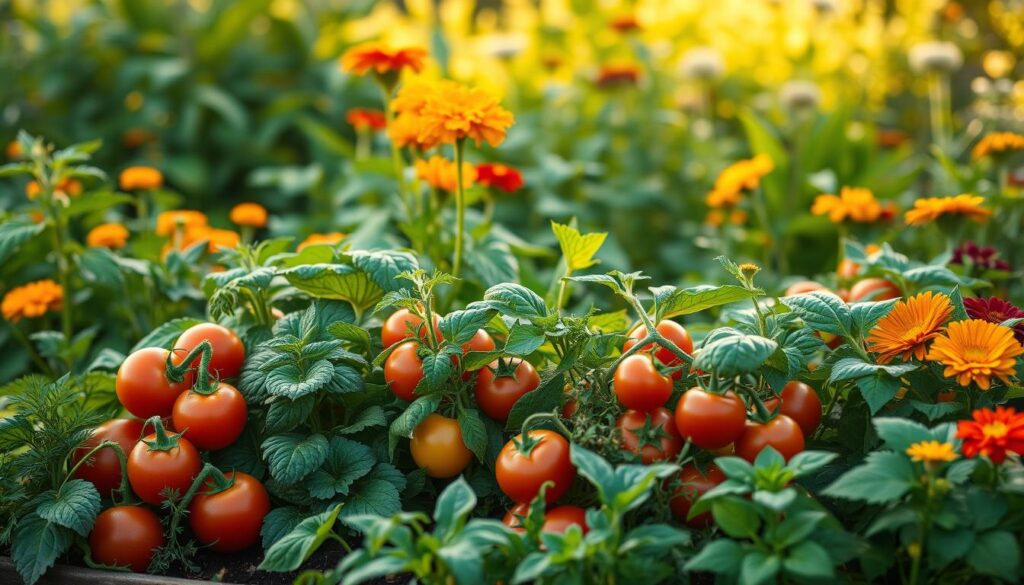
Plants to Avoid Near Tomatoes
When planning your garden, it is crucial to understand the garden plant relationships that can impact the growth of your tomatoes. Certain plants can hinder the development of your tomato plants by competing for resources or through other detrimental interactions. Let’s explore some of these problematic neighbors.
The Most Problematic Neighbors
- Fennel: This plant can create a hostile environment for tomatoes, significantly impacting their growth.
- Cabbage: As a member of the brassica family, it competes for similar nutrients, leading to stunted growth for your tomatoes.
- Broccoli: Another brassica that takes away essential nutrients from tomatoes.
- Cauliflower: Shares similar negative interactions due to their high nutrient demands.
How Certain Plants Affect Tomato Growth
Incompatible plants for tomatoes can have devastating effects on their overall health. When these plants are grown nearby, they actively compete for nutrients and water. This competition leads to nutrient depletion, which can manifest in yellowing leaves and reduced fruit yields. Understanding which plants to avoid with tomatoes is vital for a flourishing garden.
The Role of Root Systems
The root systems of nearby plants can cause significant issues for tomatoes. Competing roots can inhibit the absorption of vital nutrients, especially when plants with aggressive root systems are involved. This interference can disrupt nutrient availability, further complicating the healthy growth of your tomato plants. Being aware of these dynamics is essential for successful gardening.

Chemical Interactions to Consider
Understanding the chemical interactions in gardening is crucial for optimizing plant health, particularly for tomatoes. Various plants exhibit allelopathic properties, which means they can release specific chemicals that either enhance or inhibit the growth of nearby flora. Knowing which plants can negatively affect your tomatoes can save you significant effort and heartbreak later.
Allelopathic Plants and Their Effects
Allelopathic plants can disrupt the healthy growth of your tomatoes. For instance, fennel is a well-known allelopathic plant that adversely affects tomato plants by emitting toxins into the soil. Such plants can overshadow the benefits of companion planting, ultimately leading to poor yields or outright failure of tomato crops.
Toxic Companions
Some plants possess harmful characteristics that directly impede the growth of tomatoes. For example, walnut trees are infamous for producing juglone, a toxic chemical detrimental to tomato plants. When planted in proximity, these toxic plants can significantly hamper the vitality and longevity of your tomato crop.
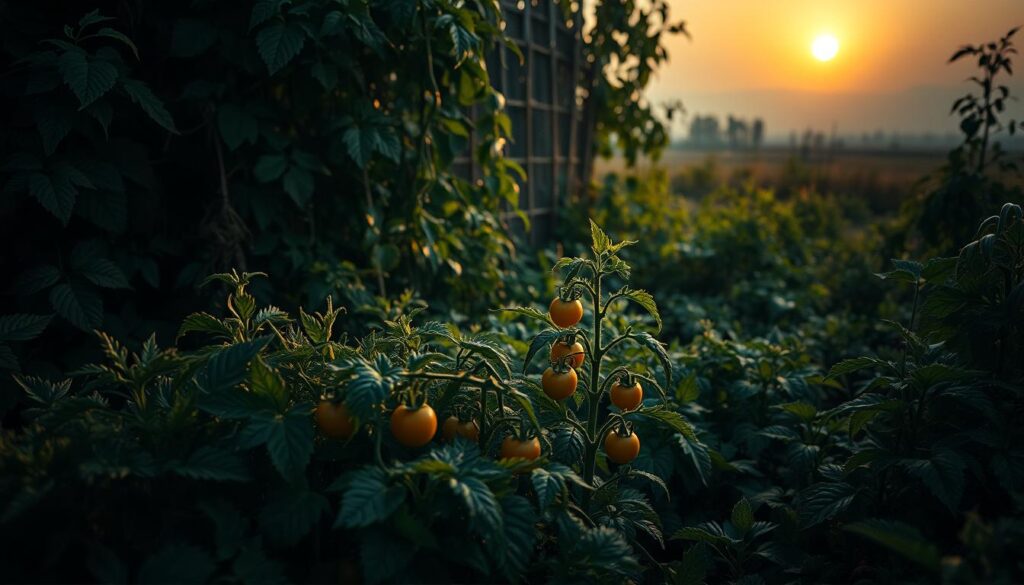
Specific Plants to Avoid
When planning your garden, awareness of specific incompatible plants can save you time and frustration. Certain vegetables to avoid planting with tomatoes can hinder their growth and overall health. Let’s explore the plants that should not coexist with your beloved tomatoes.
Potatoes: Why They’re Not Tomato Friends
Both potatoes and tomatoes belong to the nightshade family, making them susceptible to similar pests and diseases. Planting them close can lead to a heightened risk of disease transmission, such as blight. Avoiding the proximity of these two can keep your garden healthier.
Basil: When It’s Okay, When It’s Not
Basil is often praised as a companion plant for tomatoes. Yet, mature dill can compete and inhibit growth due to nutrient competition. It’s essential to track their growth phases and ensure that basil remains a supportive partner, rather than a rival.
Corn: The Trouble with Tall Companions
Corn stands tall and can overshadow smaller plants like tomatoes. This shading limits their sunlight exposure, potentially stunting growth. Consider planting corn farther away to allow your tomatoes to bask in the sunlight they need.
Other Nightshade Family Members
In addition to potatoes, other nightshades such as eggplant and peppers can create complications when planted near tomatoes. Similar vulnerabilities to pests can contribute to disease spread. For optimal tomato growth, be cautious about the placement of these vegetables to avoid unnecessary risks.
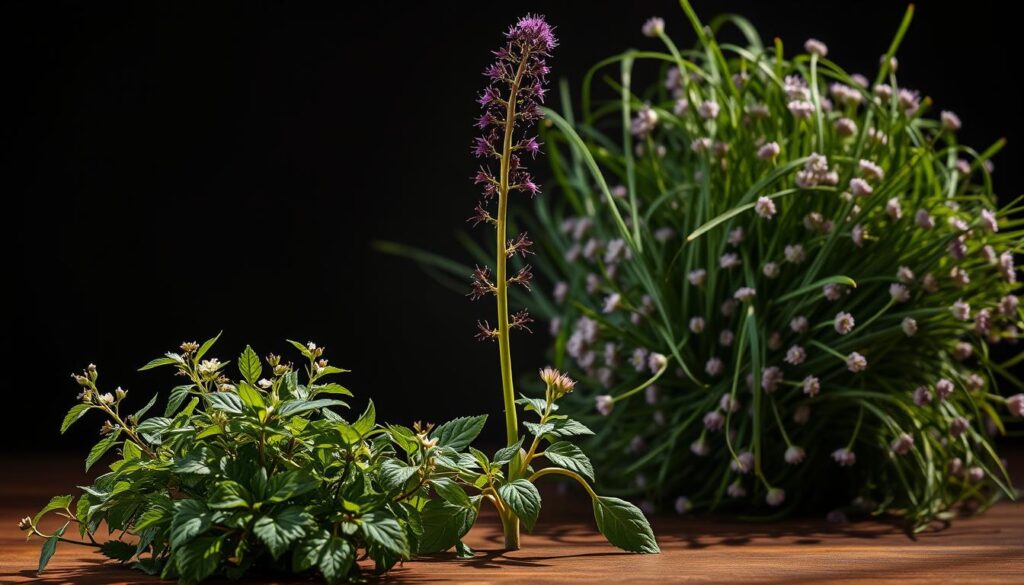
| Plant | Incompatibility Reason |
|---|---|
| Potatoes | Share pests and diseases, can spread blight. |
| Basil | Mature dill may compete for nutrients, affecting growth. |
| Corn | Shades tomatoes, limiting sun exposure and growth. |
| Eggplant | Similar pest vulnerabilities, may spread diseases. |
| Peppers | Can compete for resources, increasing disease risks. |
Signs You’ve Planted the Wrong Neighbors
Identifying the signs of incompatible plants is crucial for the health of your tomatoes. Poor companion planting choices can lead to various tomato growth problems. Look closely at how your plants are developing to ensure a thriving vegetable garden.
Recognizing Growth Issues
If your tomato plants show signs of slow growth, you might be experiencing tomato growth problems related to their neighbors. Stunted or wilting leaves can indicate that plants nearby are competing for nutrients. Discoloration, particularly yellowing leaves, can be a strong indicator of incompatible plants affecting your tomatoes’ general health.
Identifying Disease Problems
Watch for common plant disease indicators in your garden. Discoloration, unusual spots on leaves, and signs of wilting could mean your tomatoes are not just suffering from nutrient competition but may also be exposed to diseases transmitted from nearby plants. Early detection can help mitigate these issues, allowing you to make the necessary adjustments for improved growth.
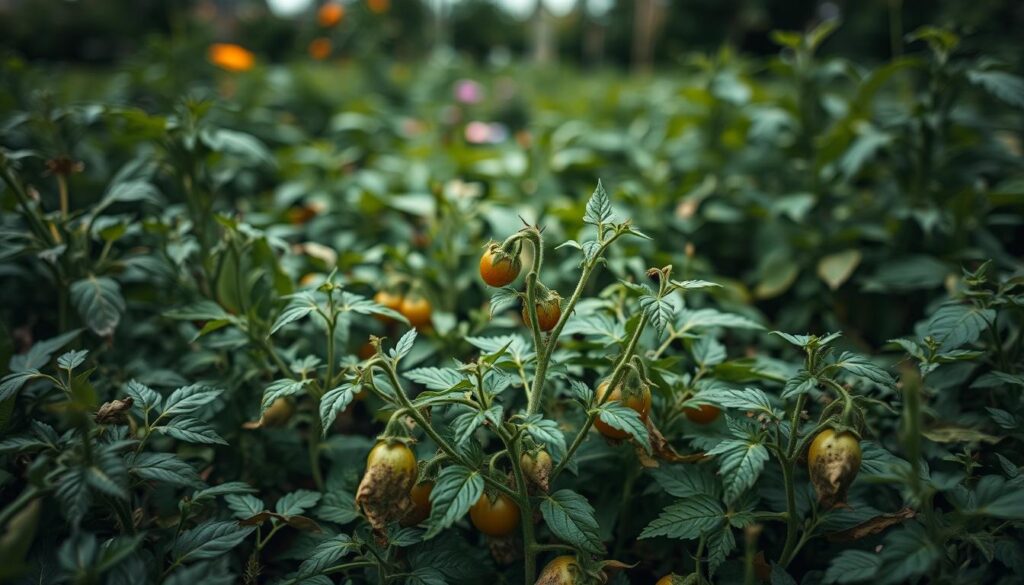
| Growth Issue | Potential Indicators | Possible Causes |
|---|---|---|
| Slow Growth | Stunted leaves, small fruit | Nutrient competition |
| Wilting Leaves | Drooping, dull color | Incompatible root systems |
| Discoloration | Yellowing or browning leaves | Plant disease indicators |
| Poor Fruit Production | Low yield, small fruits | Neglected gardening conditions |
Alternatives to Companion Planting
When considering alternatives to companion planting, you might explore a variety of beneficial plants for tomatoes that can positively impact your crop’s health and productivity. These plants can serve multiple roles, from pest deterrents to moisture retainers, creating a more robust garden ecosystem.
Beneficial Companions for Tomatoes
Some beneficial plants for tomatoes include herbs that not only enhance flavor but also attract pollinators. For example, dill and cilantro can create an inviting environment for beneficial insects. Furthermore, these herbs can coexist in your garden without competing aggressively with tomatoes, allowing for harmonious growth.
Other vegetables, like lettuce and spinach, are excellent companion planting alternatives as they thrive in the same conditions and provide ground cover. This cover helps to retain moisture and suppress weeds, benefiting your tomato plants.
Exploring Flowering Plants as Neighbors
Flowering plants can play a significant role in your garden’s diversity. Marigolds, for instance, deter harmful pests with their scent while attracting beneficial pollinators with their vibrant blooms. Their presence often translates to healthier tomatoes and increased yield.
Incorporating a combination of these flowering plants into your garden can lead to thriving tomato plants and a more visually appealing space. Experimenting with various flowering and herbaceous plants can lead to fascinating discoveries in terms of plant relationships and growth success.

| Plant Type | Benefits | Growing Conditions |
|---|---|---|
| Marigolds | Pest deterrent, attracts pollinators | Full sun, well-drained soil |
| Dill | Attracts beneficial insects | Full sun, dry to medium moisture |
| Lettuce | Ground cover, moisture retention | Partial shade to full sun, well-drained soil |
| Cilantro | Attracts pollinators, drought-resistant | Full sun, well-drained soil |
Enhancing Tomato Growth Without Companions
When companion planting isn’t an option, focus on maximizing your tomato plants’ potential through effective soil management and proper spacing techniques. These strategies play a crucial role in enhancing tomato growth, leading to healthier plants and greater yields.
Nutrient-Rich Soil Strategies
Creating nutrient-rich soil is essential for your tomatoes. Incorporate compost and organic fertilizers to ensure your plants receive the vital nutrients they need. A well-balanced mix of nitrogen, phosphorus, and potassium promotes strong root development and robust foliage. Regularly testing soil pH can help you adjust nutrients accordingly, adapting your nutrient strategies for optimal results.
Proper Spacing Techniques
Plant spacing significantly impacts tomato health and productivity. Crowding can stress your plants, making them more vulnerable to diseases and pests. Aim for a spacing of 18 to 24 inches between plants to allow adequate airflow. This spacing not only facilitates healthier growth but also ensures that each tomato plant has access to necessary resources. Implementing these spacing techniques will further contribute to enhancing tomato growth.
| Spacing (inches) | Benefits | Potential Issues |
|---|---|---|
| 12 | More plants per area | Crowded conditions, increased disease risk |
| 18 | Balanced growth and airflow | Moderate yield, manageable plant size |
| 24 | Optimal growth and nutrient access | Lower plant density, maximized individual yield |
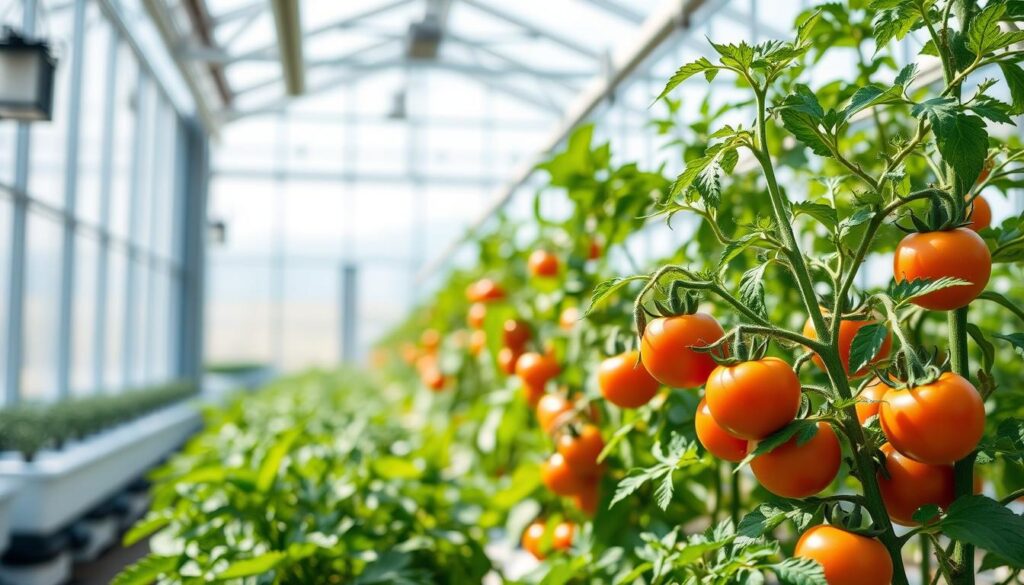
Creating a Balanced Garden Ecosystem
Establishing a balanced garden ecosystem is essential for enhancing your garden’s overall productivity and health. By introducing beneficial garden insects and fostering healthy soil microbes, you can create an environment that not only supports tomato growth but also promotes soil health throughout your garden.
Introducing Beneficial Insects
Beneficial garden insects play a crucial role in maintaining a balanced garden ecosystem. Insects such as ladybugs, lacewings, and parasitic wasps can help manage pest populations, reducing the need for chemical pesticides. By attracting these helpful insects to your garden, you create a natural form of pest control that allows your vegetables, including tomatoes, to thrive. You can encourage their presence by planting various flowers and herbs that serve as habitats and food sources.
Fostering Healthy Soil Microbes
Healthy soil is the foundation of any thriving garden, and fostering soil microbes is vital for achieving optimal soil health. Using techniques like crop rotation, mulching, and composting enhances microbial diversity in your soil. A diverse range of microbes improves nutrient availability, which is essential for robust tomato plants. In turn, this improved soil health contributes to a balanced garden ecosystem, making your entire garden more resilient and productive.
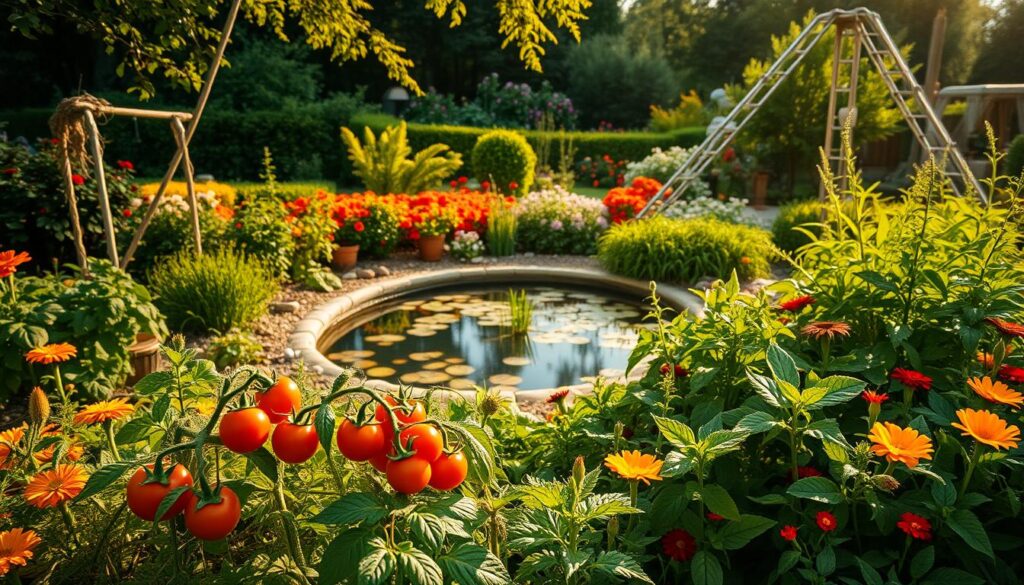
Seasonal Considerations for Planting
When it comes to thriving tomatoes, understanding your planting times is essential. Each tomato variety has its own growth cycle, which directly influences when you should plant seeds or seedlings. Embracing effective seasonal planting tips can lead to a bountiful harvest and healthier plants.
Timing Your Planting for Maximum Success
Timing your planting is crucial for optimal tomato development. Begin by checking your local frost dates to determine when it’s safe to plant outdoors. For regions with shorter growing seasons, you might consider starting seeds indoors. Doing this gives your plants a jump start, ensuring they are ready for direct sunlight once the weather warms.
Understanding Tomato Growth Cycles
Tomato growth cycles can vary significantly between different varieties. Generally, tomatoes take about 60 to 100 days to reach maturity. Knowing the specifics of your chosen variety allows you to plan when to sow seeds or transplant seedlings outside. Keeping track of these cycles will guide your decision-making and better align your planting schedule with seasonal changes.
| Tomato Variety | Days to Maturity | Ideal Planting Time |
|---|---|---|
| Early Girl | 50-60 | Late April to Early May |
| Better Boy | 70-75 | Mid May |
| Brandywine | 80-90 | Early May |
| Sungold | 60-70 | Late April |

Best Practices for Planning Your Garden Layout
Planning your garden spaces is essential for achieving a thriving tomato crop. Using garden layout tips will help you design specific zones for your tomatoes, ensuring they receive the attention they need and thrive alongside their beneficial companions. Implementing effective crop rotation further enhances soil health and maximizes your harvest. Here’s how to approach these key components.
Designing Your Garden with Tomato Zones
When establishing tomato zones, take into account the sunlight, moisture, and airflow requirements specific to tomatoes. Make sure to:
- Designate a sunny area that receives at least 6-8 hours of direct sunlight each day.
- Provide ample spacing between tomato plants to allow for air circulation and to minimize disease spread.
- Consider companion plants that can enhance your tomatoes’ growth while avoiding those that may hinder it.
How to Rotate Crops Effectively
Practicing crop rotation is vital for maintaining soil fertility and preventing pests from establishing a home in your garden. To rotate crops successfully, keep the following in mind:
- Plan your planting layout for each season, ensuring you move tomatoes to different sections of your garden.
- Alternate planting with legumes, which can fix nitrogen in the soil, benefiting your tomatoes when they return.
- Track rotation patterns to prevent any single plant family from dominating a space too frequently.
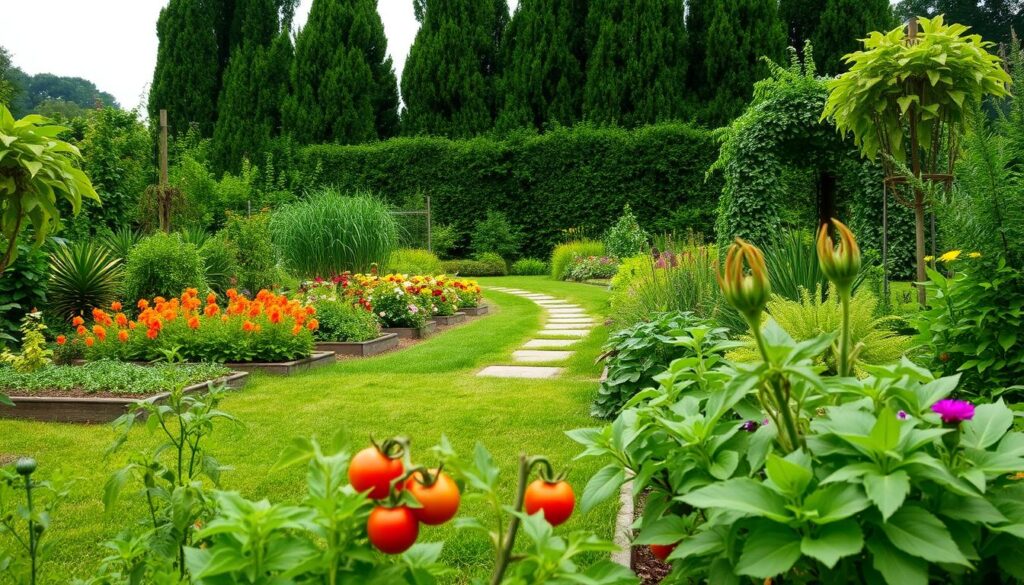
Resources for Further Reading
Expanding your knowledge about companion planting and enhancing tomato cultivation can greatly boost your gardening success. Several valuable gardening resources can help you on this journey. The right companion planting books provide insights into effective pairings and strategies that can elevate your gardening experience. In addition, following reputable gardening blogs allows you to connect with diverse perspectives and experiences from fellow gardeners.
Books on Companion Planting
Consider exploring these highly recommended companion planting books:
- The Gardener’s Companion by Michael L. Duffy
- Carrots Love Tomatoes by Louise Riotte
- Companion Planting for Beginners by Kim S. Robinson
Gardening Blogs and Online Communities
Dive into the wealth of information offered by various gardening blogs and online communities. Popular blogs such as:
- Garden Betty
- The Pioneer Woman
- Gardening Know How
These platforms provide tips on planting techniques, pest control, and much more. Engaging with online communities can offer peer support and inspiration, making your gardening experience even more enjoyable.
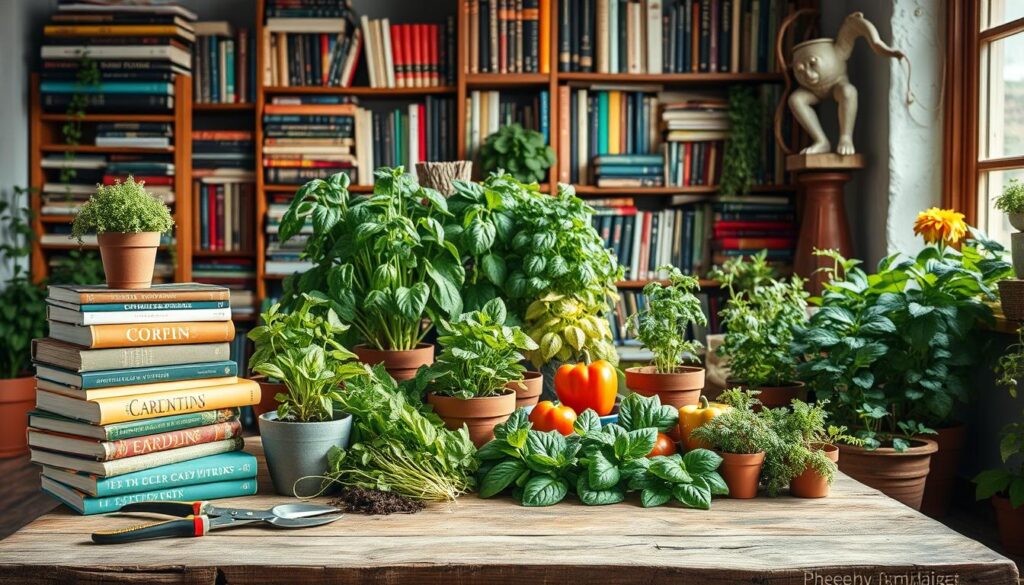
Conclusion: Crafting a Successful Tomato Garden
As you wrap up your journey towards successful tomato gardening, it’s essential to remember the key takeaways from this guide. Understanding the relationships between various plants will help you avoid complications that could hinder your tomato growth. By implementing thoughtful decisions about what to plant alongside your tomatoes, you can cultivate a vibrant and productive garden.
Your passion for garden experimentation can lead to an even more rewarding gardening experience. Don’t hesitate to try different companion plants and techniques, as each season offers new opportunities for learning and improvement. Whether it’s enriching your soil, selecting compatible neighbors, or timing your planting correctly, steady adjustments can result in better yields and healthier crops.
Ultimately, successful tomato gardening is a blend of knowledge, creativity, and adaptation. As you continue to explore these concepts, keep refining your gardening practices to foster the best environment for your tomatoes. Happy gardening!
